
“I’m going on an adventure!” I screamed to myself. “A weed adventure!”
I’d just nailed down a private ganja farm adventure in the hills of Jamaica. While there I would see marijuana growing and… Pick some? Watch the buds dry? Get stoned as hell? It was all a tad unclear; nonetheless, I was hyped.
Jamaica’s all-inclusive properties were boring to me. I wanted something different. Away from the beaches of Negril. To romp through the green, mountainous hills. So I booked a trip – feeling anything but a loser – ready to explore a more local side of the island (more local than internationally owned resorts, at least. It’s worth noting that there are plenty of locally owned guesthouses in Jamaica.)
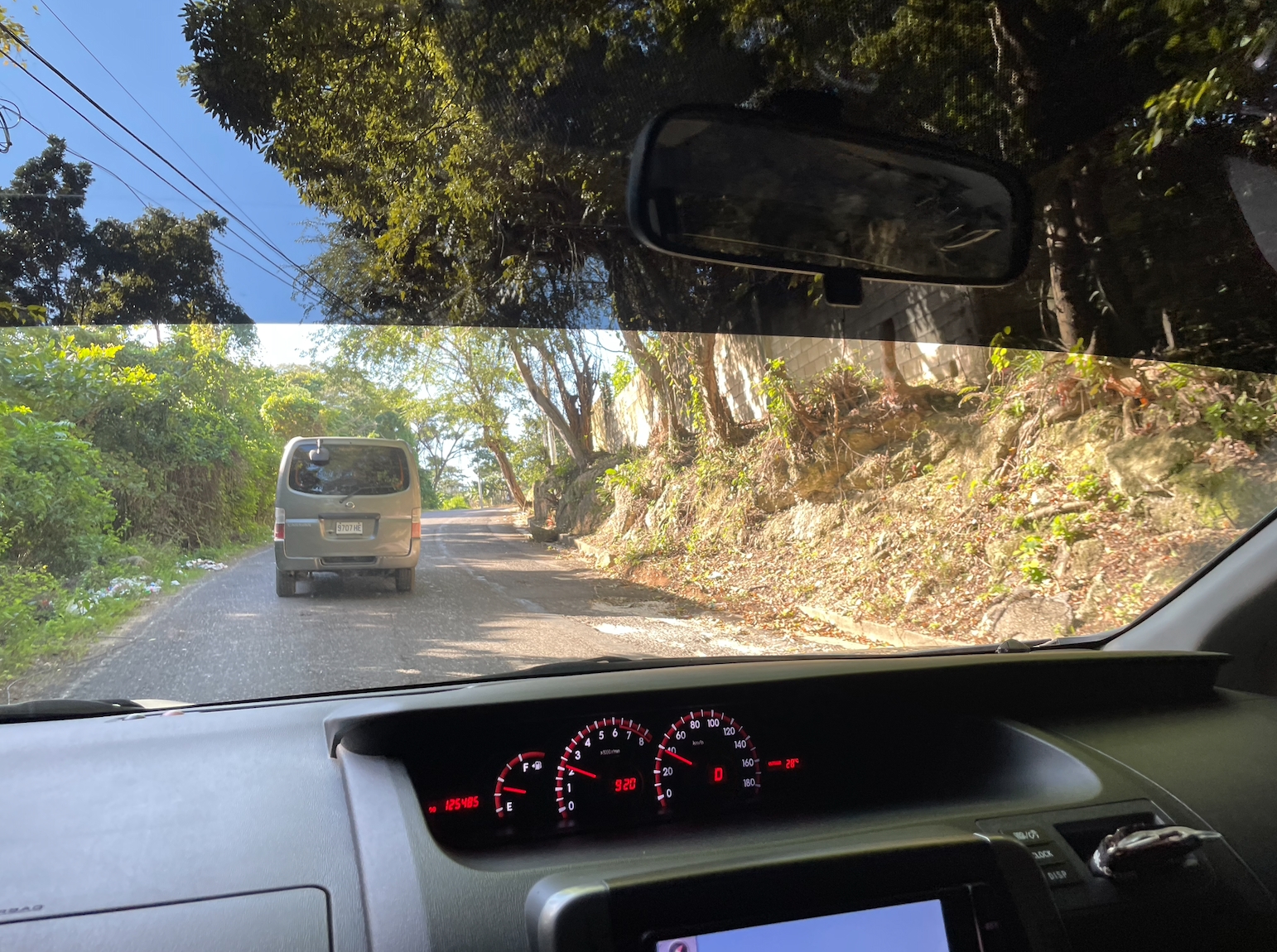
Technically speaking, marijuana – ganja, weed, cannabis, etc. – is illegal in Jamaica. It was fully banned and deemed illegal under the 1913 Ganja Law and for over a century was treated as a black-market commodity. Thankfully, world leaders are starting to come to their senses (at least about some things) and cannabis was officially decriminalized in 2015. Jamaican residents can now possess up to two ounces without the worry of a criminal record and cultivate up to five plants without prosecution. It seems like that second clause is pretty open-ended and not as heavily enforced, considering ganja grows aplenty throughout the island and there’s a lot of talk of the “farmers up in the mountains.”
Still, it does seem like there are a few safeguards — I was told little to no information on where this ganja farm was located or where exactly I was headed. “Adds to the mystique!” I thought.
I got picked up at 9 am. My driver, Dennis, arrived in a minivan and I slid into the front passenger seat (the left side, since they drive on the left in Jamaica), and off we went. As we wound our way into the hills, I noticed that most of the land was fenced off for farming. Dennis explained that the first town we came to, Good Hope, currently represents one of the largest farm-based communities throughout the whole island of Jamaica. A local football field sat to the left center of the town, complimenting the houses nestled along the main road.
A few more minutes up Mt. Airy, Dennis slowed down and pulled over. Right behind us was a small bar. To the right was a tall wire metal fence. Dennis called through cupped hands into the hilly fields above the road and a man appeared.
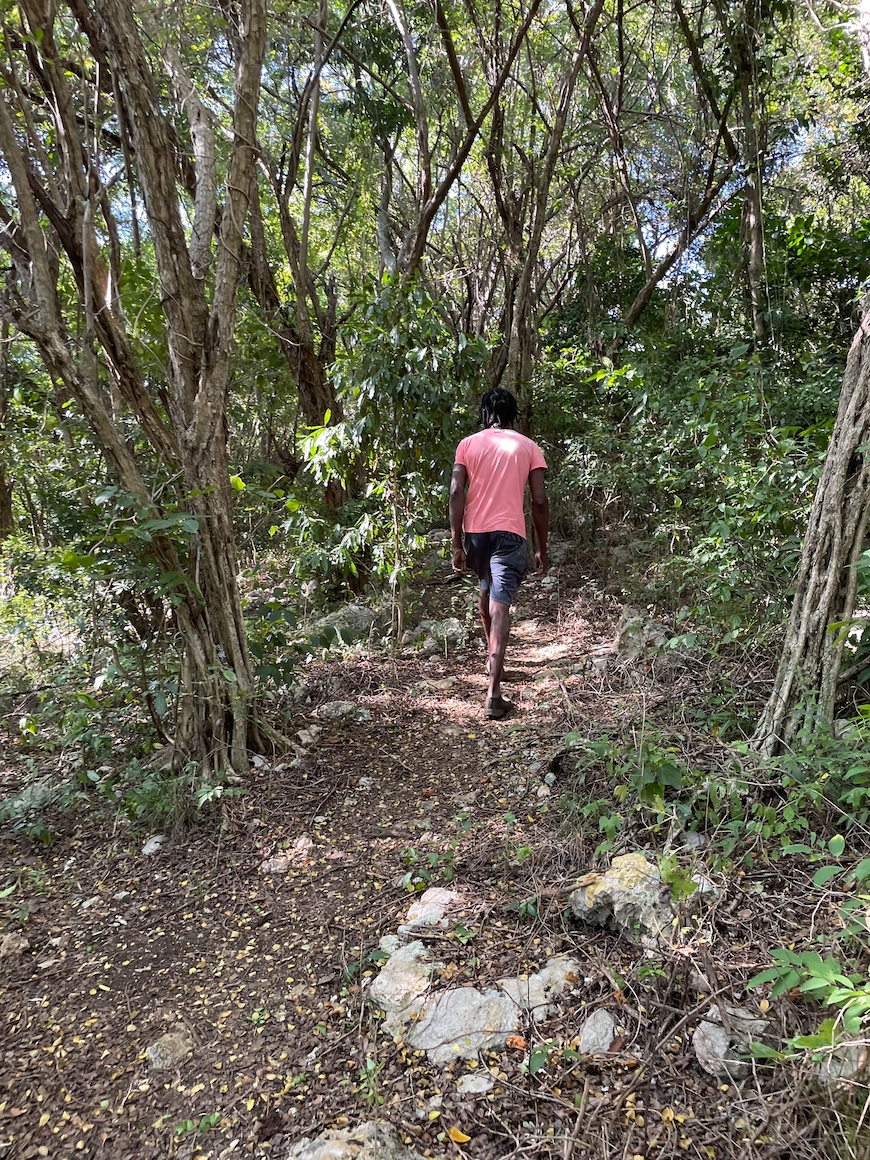
Dennis introduced me to Kurt, who wore a salmon-colored t-shirt and gray shorts. He was a slim man, probably in his 40s, and a man of few words. I was told to follow him, and we started making our way up through dense switchbacks. Having lived in Colorado and Utah for the past three years, I was able to keep up pretty easily. It was the humidity that I wasn’t used to.
With Kurt leading the way, me following behind, and Dennis in the back, we finally arrived at a gate made out of scrap metal. You could already see the marijuana plants peeking out over the wire fencing lining the farm. Then, once Kurt opened the gate, it became sensory overload and I understood the magnitude of the operation.
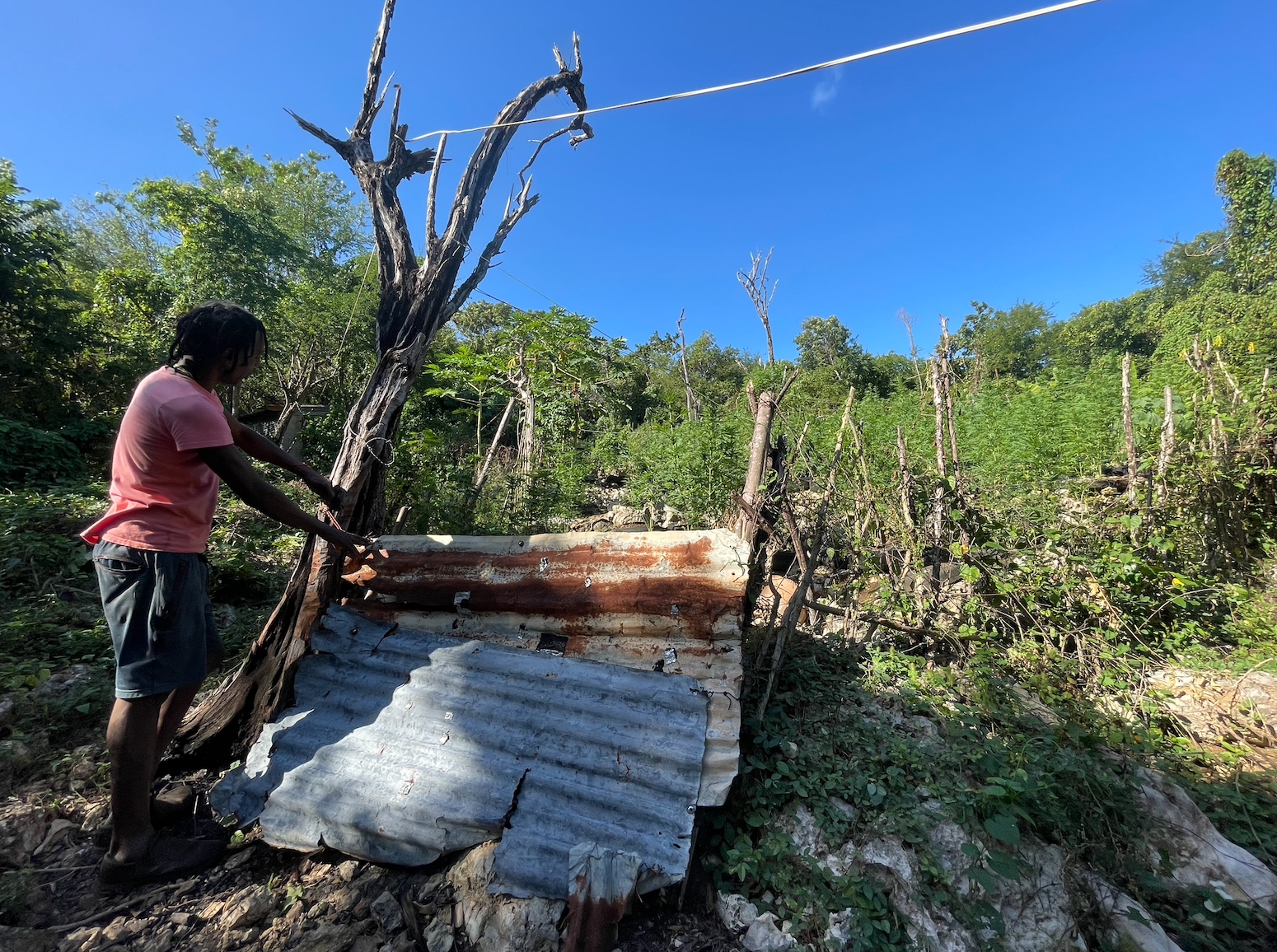
Thousands of marijuana plants surrounded my field of vision in just about every direction I looked. Not only that, but the smell was… mouthwatering. Even if you don’t smoke weed, it’s hard to not take a little liking to the smell of fresh plants. Here, the plants lived and prospered among the natural terrain of the land. Many of the plants were growing in tires, but some were also growing tall in the natural soil.
We were 120 meters (393 feet) above sea level, there was a plethora of Cretaceous limestone throughout the farm. Believe it or not, the ocean once covered this land, before the island rose out of the sea millions of years ago.
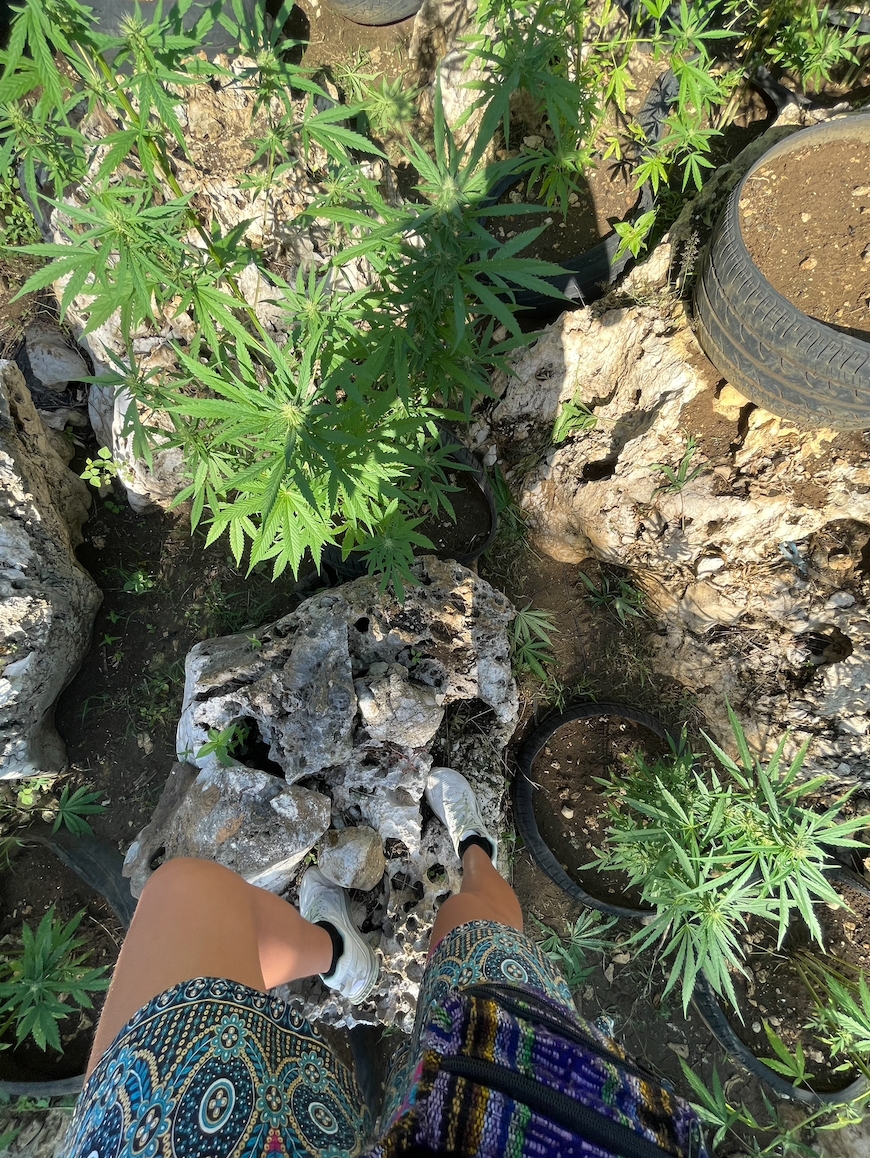
While growing marijuana outside may not be considered optimal conditions in the United States, it is in Jamaica. I was told that this farm is among dozens more throughout the area that grows and cultivates ganja to be sold and dispersed throughout the island. Because of the mineral-rich rocks and soil, the plants prosper and grow here year-round without a problem.
Later, I was told that Mount Airy and Orange Hill – the small town right after the farm – are considered the epicenter of marijuana cultivation in all of Jamaica.
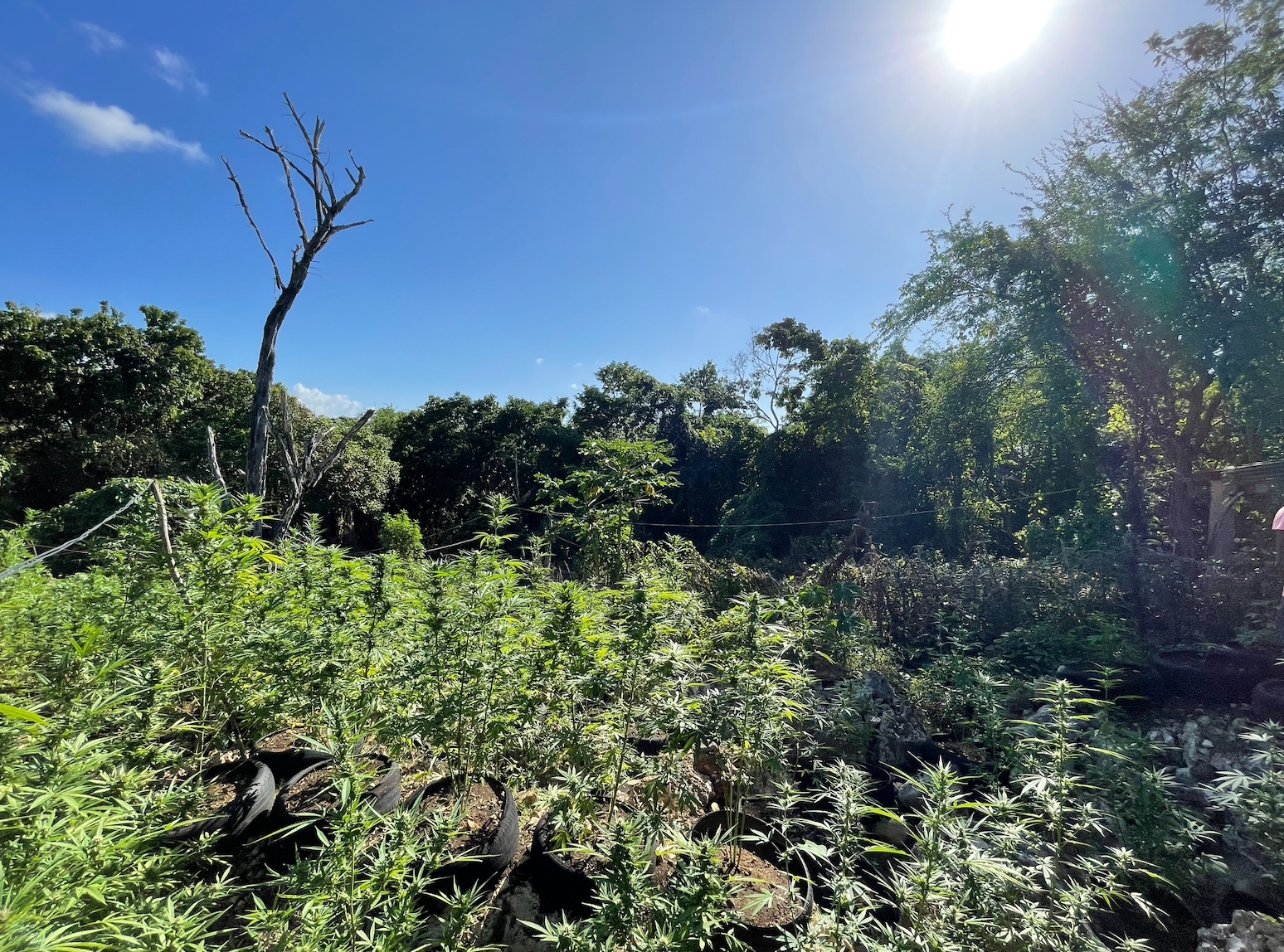
Making sure I watched my footing, I walked through the dense forests of cannabis plants. Huge plants as high as 10 feet hovered over me, while some plants were just starting off as little sprouts. There were families of plants ready to harvest and little wee new buds that were soaking in as much sun and water as possible to thrive.
Because of the close proximity, Kurt told me that almost all of the plants are hybrids, constantly pollinating and replicating almost every day. He couldn’t keep count of how many plants he has.
“I don’t know, maybe a thousand,” he said. “I can’t keep track, honestly. There are dozens that pop up every day.”
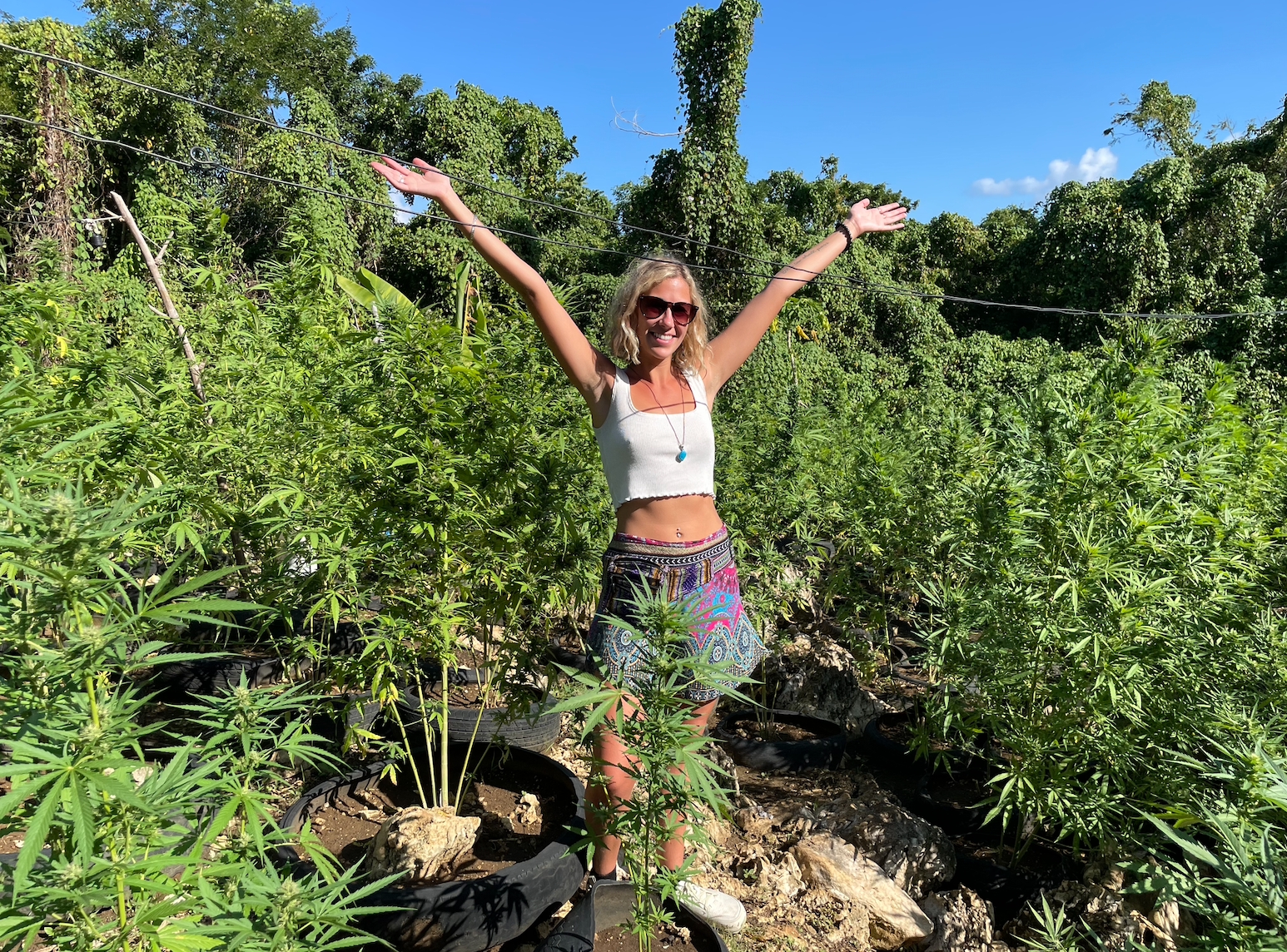
I noticed several piles of what looked like fire ash in various locations throughout the farm.
“The plants like to smoke,” Kurt told me with a slight laugh.
He was telling the truth. While marijuana operations in the states may have to adhere to strict growing guidelines and use methodically calculated and researched additives and chemicals in order to get the best-tasting strains, the Jamaicans I met (Kurt in particular) prefer a more natural method: smoking the plants. He explained that exposing marijuana plants to regulated, small amounts of fire smoke yields stronger and more potent plants.
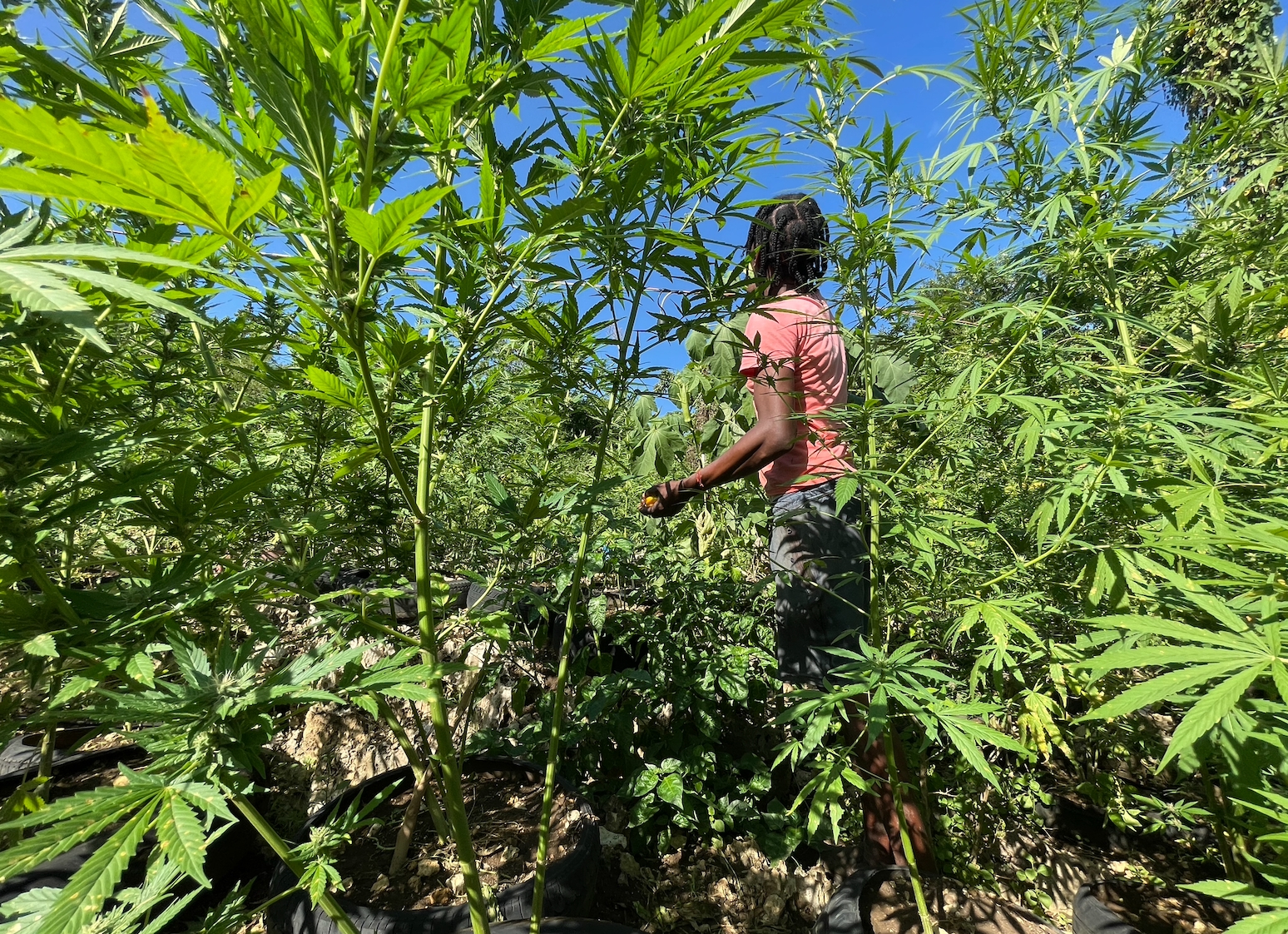
While ganja leaves and aromas took up most of my sensory awareness, some “misplaced” plants also stood tall among the cannabis plantation. A papaya tree and banana tree positioned themselves proudly among their marijuana counterparts, while several hidden Scotch bonnet pepper plants camouflaged themselves in the thick of the ganja growth. Kurt picked some fresh peppers for Dennis to take home. Me on the other hand, I wanted to smoke some of what we just saw and take some of those goodies back with me.
After strolling through this nearly three-decades-old ganja farm, smelling the abundance of Mary Jane against the salty breeze, and seeing and feeling the delicious sticky buds, I’d worked up quite the appetite to smoke.
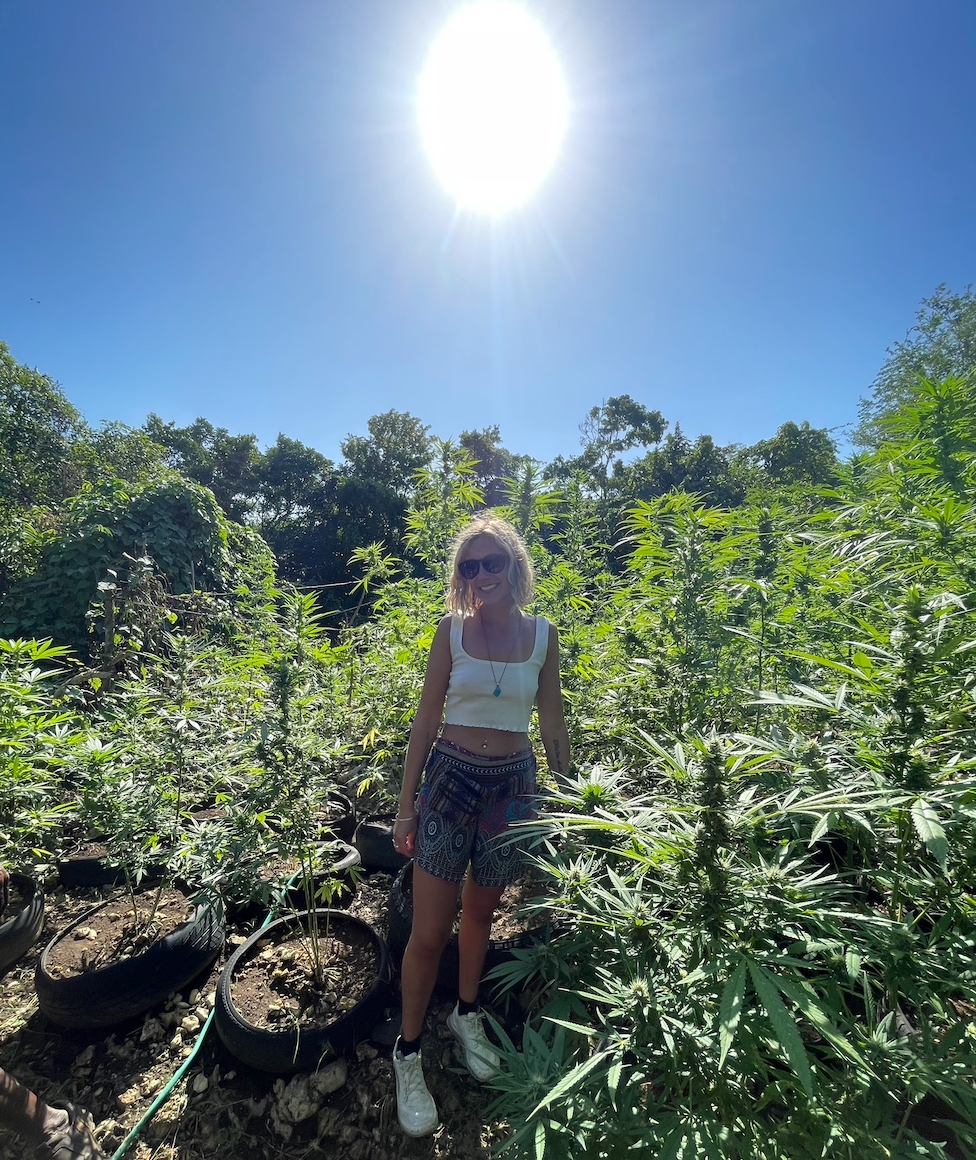
Soon, the tour was over and it was time to blaze up in the hills of Jamaica. Dennis and I followed Kurt back down the switchbacks and the three of us ended up in Kurt’s little beach bar shack close to where we’d parked. Kurt went into a side shed and pulled out some of the farm’s recently cultivated and dried buds for us to smoke as a trio. At which point Kurt nonchalantly revealed he doesn’t smoke. Dennis said the same.
That left me to take care of business. Kurt took out a little electric coffee grinder and ground a fat bud into a perfect consistency of ground flower. As Dennis rolled some of it up into a joint for me, Kurt packed the rest into a homemade coconut bong.
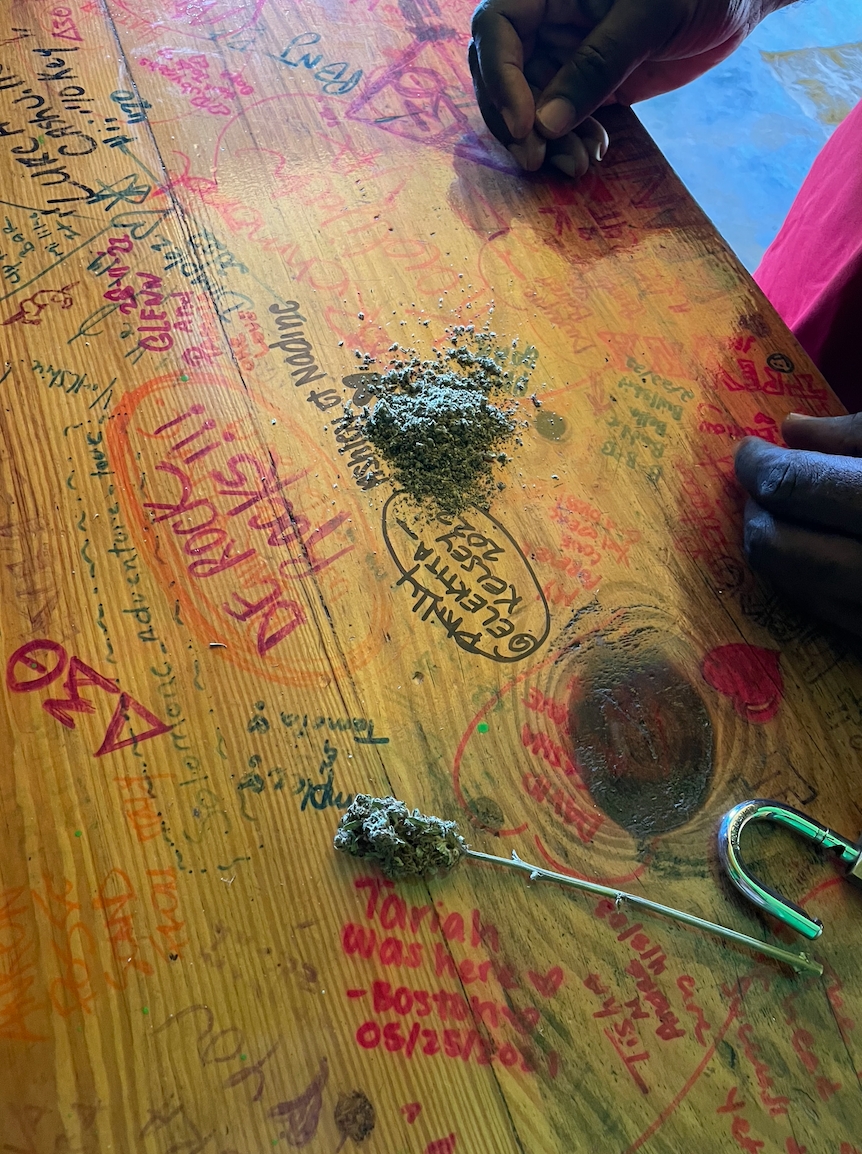
I felt like Gandolf as I took my first hit, due to the bong’s long mouthpiece. Once I exhaled, I realized immediately that we weren’t in Colorado anymore. The weed was dank. I coughed my way through the smoke as Dennis and Kurt laughed at me. The weed tasted quite good, almost as if the salty air and Caribbean sun had kissed each plant and all of its beautiful buds with some bright citrus flavors.
After three long drags of the coconut bong, I was good to go.
“How is it?” Dennis asked me.
“Irie,” I replied through my coughing. I thought I was a seasoned veteran when I came to smoking, but the Jamaican plants hit me on a whole new level.
Dennis finished rolling the joint, but I couldn’t even smoke it. It would be too much and a waste, considering I was already floating among the hills, I put the joint and leftover bud carefully in my bag.
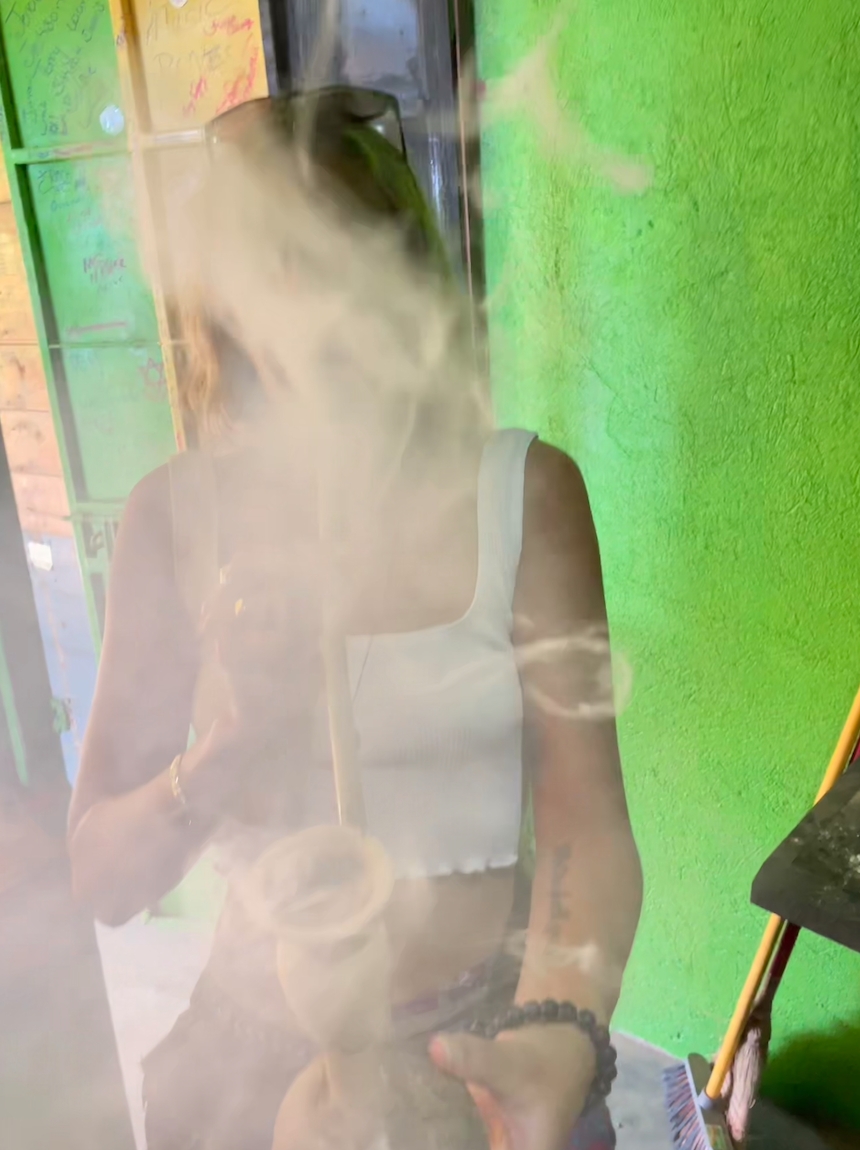
Having lived in Colorado for several years and naturally surrounding myself with all the weed-smoking hippie friends I could find in all the various cities I’ve lived in, smoking marijuana is nothing new to me. I’ve even bought some pretty terrible weed from a local in downtown London once, which did the job but was nothing similar to that in the United States. Seeing it firsthand in Jamaica, I can understand why ganja is considered the “wisdom weed” by practicing Rastafarians and how it has become a true commodity. The people I met — even non-smokers — respect it in a different way.
There really is a “weed as medicine” dynamic at play that most American smokers seem to have missed. Or at least ignored in favor of getting as high as possible as fast as possible.
Seeing a farm helped me step away from the US’s current commodification of weed. I found something quite special about venturing off into the idyllic land of marijuana plants and seeing where it all really comes from and the real people that make it all happen. Needless to say though, there isn’t really an “official” way to book such a trip. I was able to find a trusted driver who knew Kurt and convinced him to show me – a complete stranger – a tour of his farm. You just have to poke around a little bit to find the people who know these hidden spots and trust that it’ll all work out.
And that’s the point of travel… right? With a thirst for adventure and an intrepid spirit, it can take you to some mighty high places.
